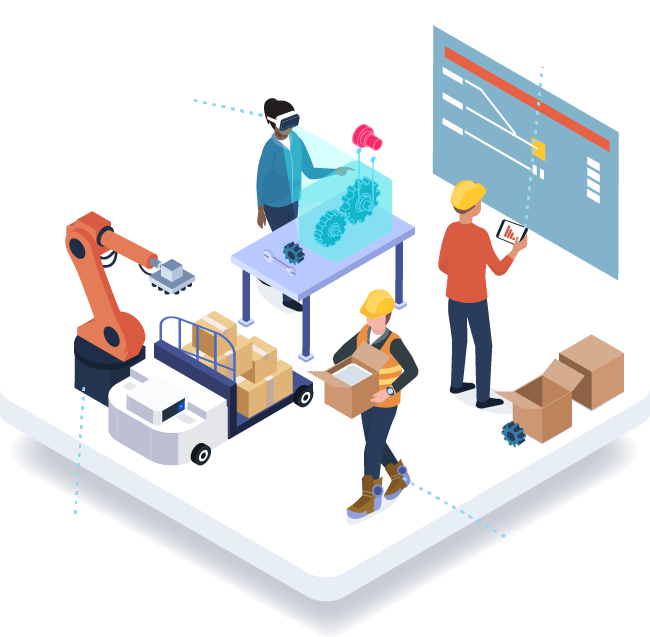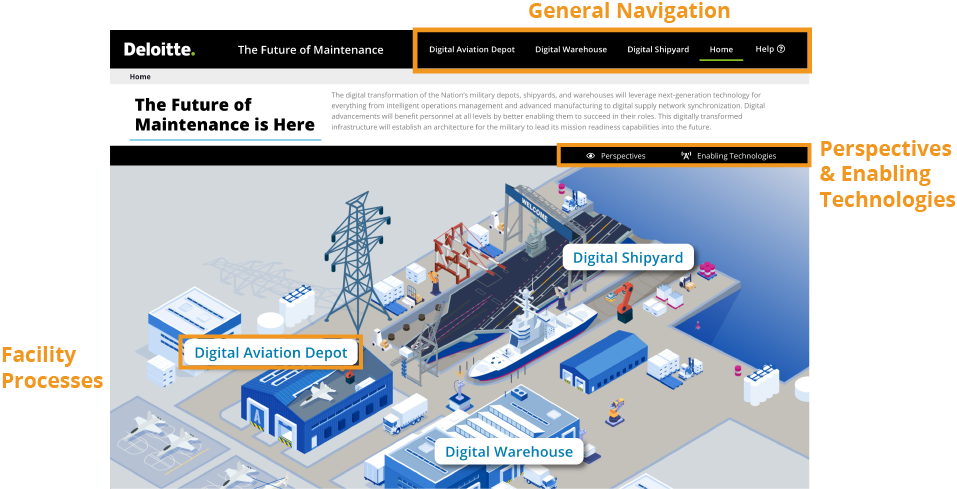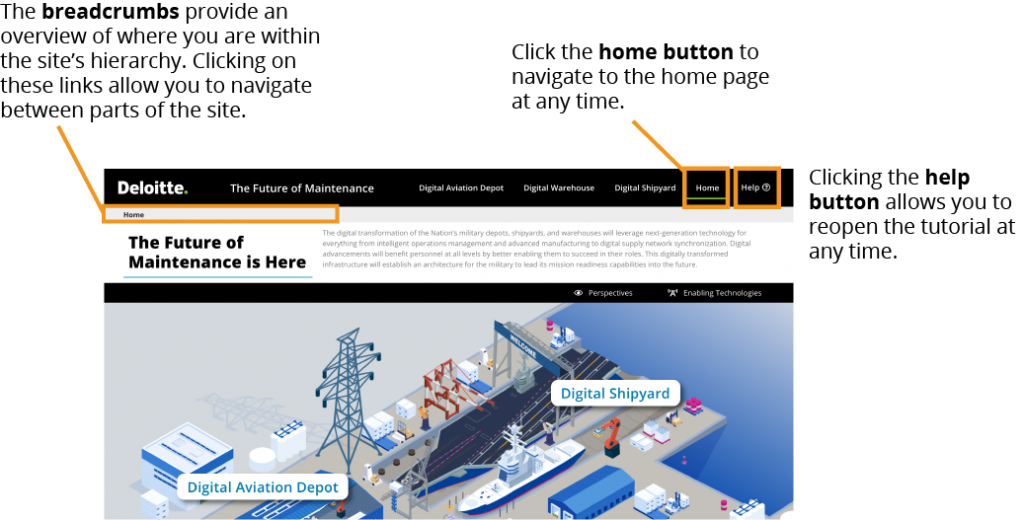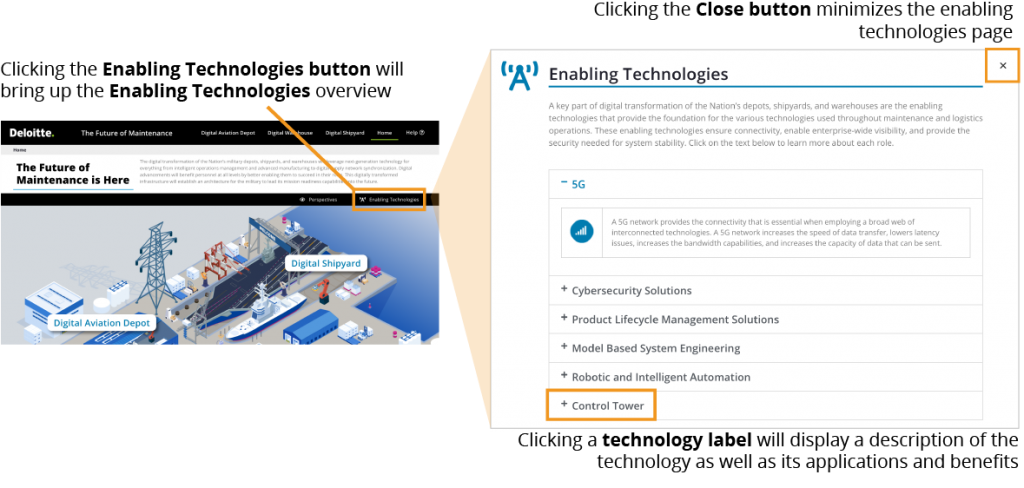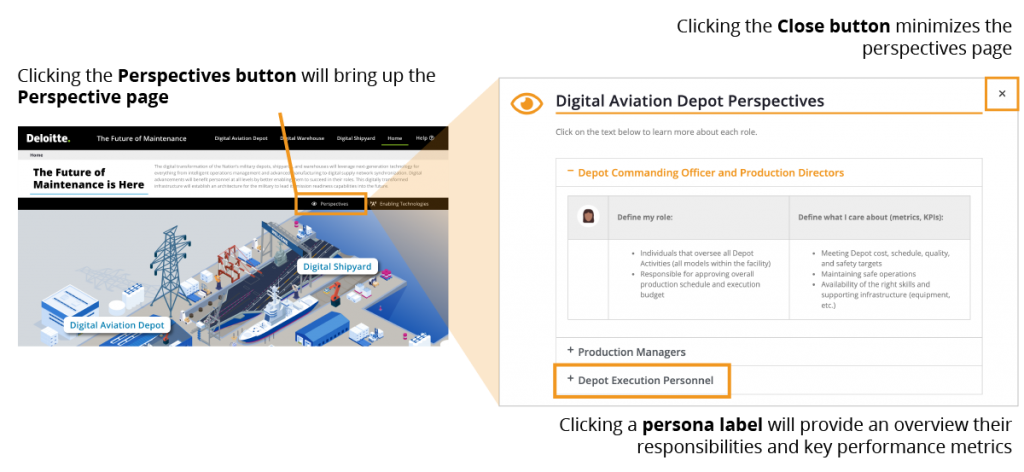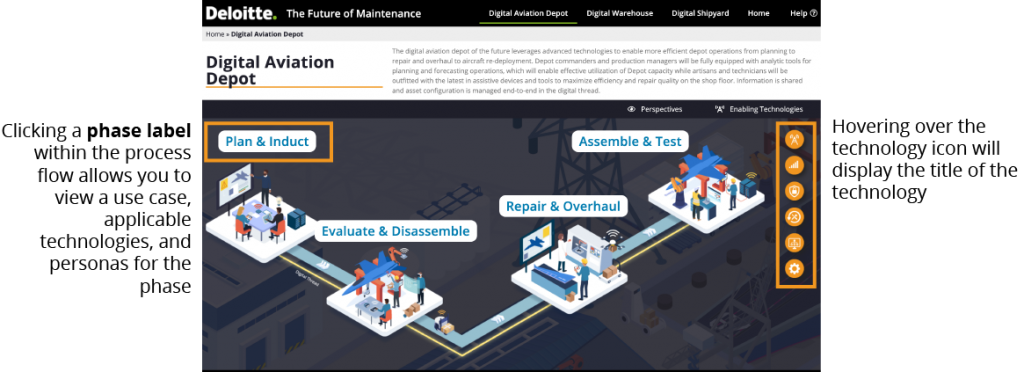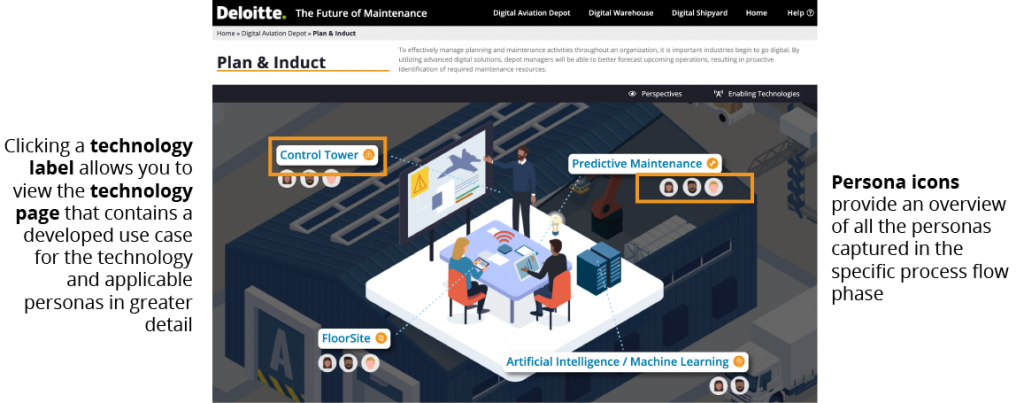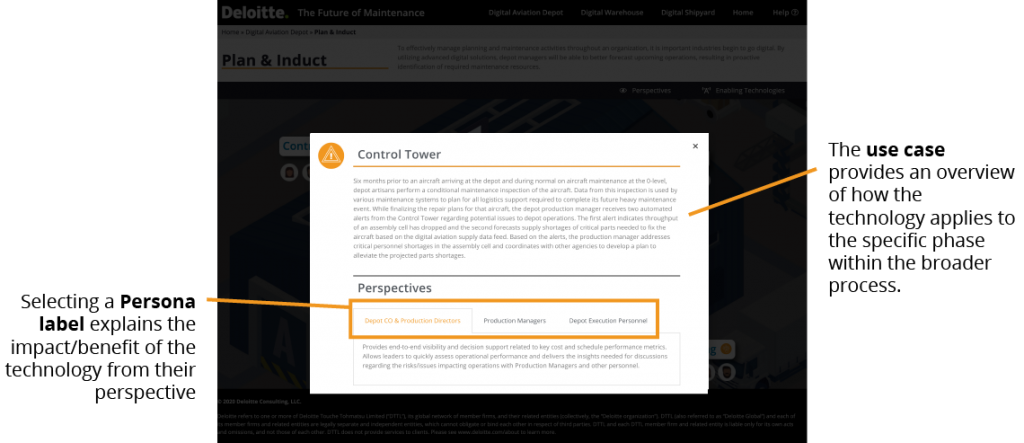Open & Inspect
Once the ship is inducted into the shipyard, shipyard workers use digital technologies to accelerate teardown, collect real-time
operational feedback, and incorporate lessons learned from other yards. Cumbersome components are efficiently and safely
transported using physical robots. Real-time part progression is tracked across the shipyard using Radio-Frequency Identification
(RFID) Internet of Things (IoT) sensors. Worker safety monitoring, procedure simplification, and efficient cross-shipyard communication
are achieved using tablets, smart watches, and augmented reality headsets.
